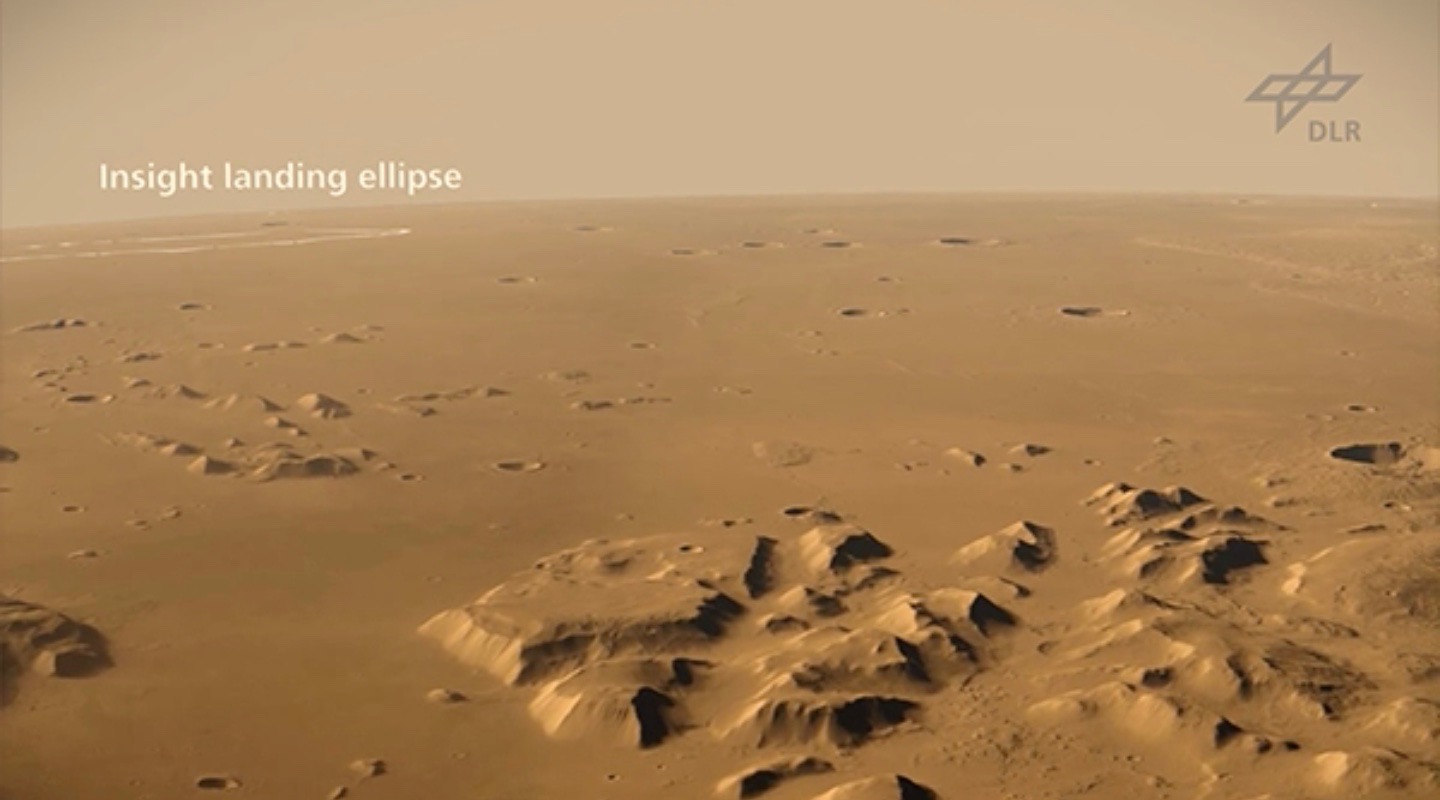A new video gives a bird's-eye view of the patch of Mars that NASA's InSight lander now calls home.
The flyover video above, and available here on YouTube, shows the area in and around Elysium Planitia, the equatorial plain on which InSight touched down on Monday (Nov. 26).
"At the beginning, the supra-regional topography of the landing site is shown from various perspectives within a radius of a few hundred kilometers," officials with the German Aerospace Center, known by its German acronym DLR, said in a statement Monday describing the video. [NASA's InSight Mars Lander: Full Coverage]
"The first scene shows the approach to the approximately 13-kilometer-high [8 miles] Elysium Mons volcano, from north to south," the officials added. "This is followed by a loop and flight over Elysium Planitia, from southeast to northwest with a view of the landing ellipse."
Researchers created the new animation using a digital terrain model, which incorporated image data gathered by DLR's High Resolution Stereo Camera, which flies aboard the European Space Agency's Mars Express orbiter. Mars Express has been studying the Red Planet from above since 2003.
Elysium Planitia is flat and boring, but that's no problem for InSight; the lander will investigate the Martian interior, so mission team members weren't looking for a place with interesting surface features. Indeed, complex terrain was something to be avoided, because it could make a safe touchdown more difficult.

InSight carries two main science instruments: a burrowing heat probe provided by DLR and a suite of seismometers built by a consortium led by France's national space agency, CNES. The data gathered by this gear over the next two Earth years will reveal a great deal about Mars' internal structure and composition, NASA officials have said.
Get the Space.com Newsletter
Breaking space news, the latest updates on rocket launches, skywatching events and more!
In addition, the InSight team will track the lander's position carefully using the craft's communications equipment. This work will tell scientists how much Mars' axis of rotation wobbles, which in turn will shed considerable light on Mars' core.
Taken together, this information should help researchers better understand how rocky planets in general form and evolve, InSight team members have said.
The $850 million InSight mission launched on May 5, along with two fly-along cubesats called MarCO-A and MarCO-B, which beamed data from the lander home to Earth during Monday's touchdown.
InSight will use its robotic arm to place both the heat probe and the seismometer suite directly on the Martian surface. The mission team won't be ready to do this for another two to three months, after they've studied InSight's environs and practiced the deployments using a testbed lander at NASA's Jet Propulsion Laboratory in Pasadena, California.
"InSight" is short for "Interior Exploration using Seismic Investigations, Geodesy and Heat Transport."
Mike Wall's book about the search for alien life, "Out There" (Grand Central Publishing, 2018; illustrated by Karl Tate) is out now. Follow him on Twitter @michaeldwall. Follow us @Spacedotcom or Facebook. Originally published on Space.com.
Join our Space Forums to keep talking space on the latest missions, night sky and more! And if you have a news tip, correction or comment, let us know at: community@space.com.

Michael Wall is a Senior Space Writer with Space.com and joined the team in 2010. He primarily covers exoplanets, spaceflight and military space, but has been known to dabble in the space art beat. His book about the search for alien life, "Out There," was published on Nov. 13, 2018. Before becoming a science writer, Michael worked as a herpetologist and wildlife biologist. He has a Ph.D. in evolutionary biology from the University of Sydney, Australia, a bachelor's degree from the University of Arizona, and a graduate certificate in science writing from the University of California, Santa Cruz. To find out what his latest project is, you can follow Michael on Twitter.









